Tundra Climate: [Characteristics, Flora, Fauna and Adaptability]

Important points about the Tundra Climate:
- What is? The tundra climate is a climatic representation that is characterized by extreme cold, although there is a space of time in the year in which it is milder.
- Where it is located? The geographical location of this climate is between 60 and 75º latitude, both north and south. This includes spaces such as the Arctic, the northern coastal area of Greenland, the Antarctic coast and the area that falls within these latitudes in Siberia.
- What flora predominates? What prevails are lichens, ferns, some types of mosses and a minimum amount of grasses.
- What fauna predominates? Characteristic species are the arctic fox, polar bear, seals, sea lions, penguins, white hare, among others.
- How long is the day and night? In the case of summer, it is possible that the day can last up to 24 hours in a row; while in the winter, the night can last up to 24 hours.
- Can humans live in this climate? Human settlements do exist in certain spaces with a tundra climate, since temperatures are cold but not excessively so.
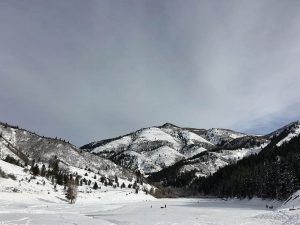 The tundra climate is one of the coldest and most inhospitable in the world, characterized by temperatures that are below 0º C most of the year.
The tundra climate is one of the coldest and most inhospitable in the world, characterized by temperatures that are below 0º C most of the year.
It has a characteristic flora and fauna that has managed to adapt to what the environment provides, but it is not very numerous in terms of species.
The geographical area where this climate develops is oriented near the poles, where the sun tends to shine less strongly. And there are many more details that we want to tell you about this weather, so we invite you not to take your eyes off your computer screen in the next few minutes.
What is tundra climate?
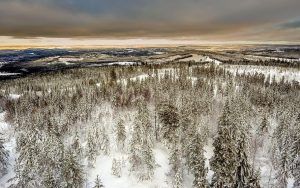 The tundra climate is a climatic representation that is characterized by extreme cold, although there is a space of time in the year in which it is milder.
The tundra climate is a climatic representation that is characterized by extreme cold, although there is a space of time in the year in which it is milder.
It is relatively humid due to the precipitation that occurs in the form of snow, since the low temperatures prevent it from emerging in liquid form.
Even so, it is a very representative climate of planet earth and where certain species of flora and fauna coexist. And the latter is the main difference between this climate and other similar ones such as the cold climate, where life is not possible.
Where is the tundra climate located geographically?
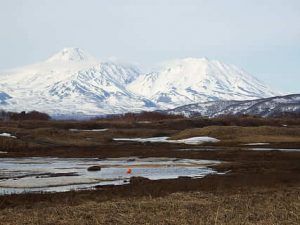 The geographical location of this climate is between 60 and 75º latitude, both north and south.
The geographical location of this climate is between 60 and 75º latitude, both north and south.
This includes spaces such as the Arctic, the northern coastal area of Greenland, the Antarctic coast and the area that falls within these latitudes in Siberia.
Although it is a framework that could be considered as very limited, in this area it is of great importance. The reason is that it is an ecosystem where life is evident, given the imminent climatic conditions that exist.
What characteristics does the tundra climate have?
The tundra climate is characterized by:
- Winters: they are extensive, almost with total pre-eminence throughout the year. Temperatures on those days are below 0º C.
- Summer: it is not defined under the known scheme of what this season implies, but there is a short period of the year where temperatures are a little higher. These tend to go a little over 0º C.
- Precipitations: they are frequent at certain times, but they do not occur in liquid form but always as snow. Still, it brings a certain level of moisture to the environment that tundras appreciate.
- Types: There are two types of climates encompassed within the tundra climate. The first is the polar tundra, which is characterized by presenting itself in the arctic and antarctic areas with a summer that lasts about two months and a winter that lasts for the rest of the year. The second type is the alpine tundra, which is the one that exists in the mountains and that occurs under ecosystems of paramo, prairies, thickets, mountain ranges, punas, plateaus and grasslands.
What flora predominates in the tundra climate?
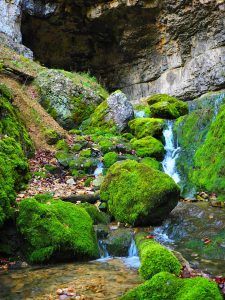 The flora of the tundra climate is not very varied due to the conditions that are generated in these spaces. About 400 thousand species are counted.
The flora of the tundra climate is not very varied due to the conditions that are generated in these spaces. About 400 thousand species are counted.
What prevails are lichens, ferns, some types of mosses and a minimum amount of grasses.
These are developed in environments where trees do not exist, so flat spaces that are sometimes known as “icy plains” predominate.
The reason for this is because they are spaces where strong winds are often generated, so small plants are hardly affected by them. The location of each type of vegetation is defined by the altitude at which the climate is found, varying as follows:
- For the tundra that is in low-lying areas, what is evident are grasses and bushes.
- The tundra that is in high areas is characterized by lichens and mosses.
One of the most striking behaviors of the flora in this area is that they usually grow in groups, as a protection and survival mechanism.
What fauna predominates in the tundra climate?
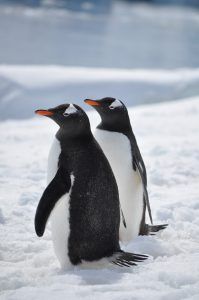 In the tundra climate, it is possible to have a greater variety of fauna than in other cold climates, such as the icy one.
In the tundra climate, it is possible to have a greater variety of fauna than in other cold climates, such as the icy one.
Characteristic species are the arctic fox, polar bear, seals, sea lions, penguins, white hare, etc. Each of them will be present depending on the location of the tundra.
All these species have developed an adaptation system, both physically and behaviorally, to withstand low temperatures and low humidity.
Within these adaptations there are elements such as oily skin, a very thick coat of hair, small ears, firm legs, etc. Even many of the animals in cold areas are usually white, which helps them blend in with the snow and avoid attack by their predators.
They may also hibernate or migrate during periods when temperatures are lower.
How long is the day and night in the tundra climate?
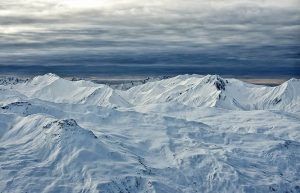 Being close to the poles, the tundra climate is influenced by the oblique arrival of the sun’s rays.
Being close to the poles, the tundra climate is influenced by the oblique arrival of the sun’s rays.
This greatly modifies the length of day and night. In general, these are usually influenced by the presence of summer or winter.
In the case of summer, it is possible that the day can last up to 24 hours in a row, while in winter, it can last up to 24 hours at night.
Can humans live in the tundra climate?
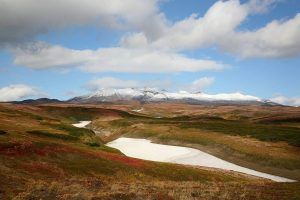 Human settlements do exist in certain spaces with a tundra climate, since temperatures are cold but not excessively so.
Human settlements do exist in certain spaces with a tundra climate, since temperatures are cold but not excessively so.
For example, the city of Nuuk, which is the capital of Greenland, has about 16,500 inhabitants in its entirety.
Other lesser-known areas, such as the Andean moors, have populations in certain spaces, since they take advantage of arable land for the production of potatoes, oats, strawberries, carrots, etc.
However, spaces with a tundra climate are not particularly attractive, so it is not often that there are highly populated cities.
Investigate if there is a space with a tundra climate near where you live, it can be very interesting to visit it and learn about everything we have told you here.
Bibliographic references
- Eco-geographic landscapes of the Atacama Region, JE Novoa, Y Tracol, D López – Red Book of Native Flora and …, 2008 – observatoriocaldera.cl
- Subantarctic tundra in the Big Island of Chiloé, Chile:: Flora and peat vegetation of campaigns, C Ramírez, C San Martín, O Vidal, Y Pérez… – Annals of the Institute of…, 2014 – scielo.conicyt.cl
- Notes on the climate of Magallanes (Chile), A Xercavins – Geography Magazine, 1984 – raco.cat
- Specific composition and structure of the summer bird community in the Magellanic Tundra complex, L Guzmán, A Atalah… – Annals of the Institute of…, 1985 – Bibliotecadigital.umag.cl
- Arctic biodiversity: increasing wealth accompanies shrinking refuges for cold-associated tundra fauna, AG Hope, E Waltari, JL Malaney, DC Payer… -…, 2015 – Wiley Online Library
Maybe you are also interested in:
- Koppen climate classification: [Concept, Characteristics and Types of Climates]
- Alpine Climate: [Characteristics, Flora, Fauna and Adaptability]
- Arid Climate: [Characteristics, Flora, Fauna and Adaptability]
- Temperate Continental Climate: [Characteristics, Flora, Fauna and Adaptability]
- Continental Climate: [Characteristics, Flora, Fauna and Adaptability]
- High Mountain Climate: [Characteristics, Flora, Fauna and Adaptability]
- Climate of Argentina: [Characteristics, Flora, Fauna and Adaptability]
- Australia Climate: [Characteristics, Flora, Fauna and Adaptability]
- California Climate: [Characteristics, Flora, Fauna and Adaptability]
- Climate of Europe: [Characteristics, Flora, Fauna and Adaptability]
- Equatorial Climate: [Characteristics, Flora, Fauna and Adaptability]
- Cold Climate: [Characteristics, Flora, Fauna and Adaptability]
- Cold Weather: [Characteristics, Flora, Fauna and Adaptability]
- Mediterranean Climate: [Characteristics, Flora, Fauna and Adaptability]
- Ocean Climate: [Characteristics, Flora, Fauna and Adaptability]
- Polar Climate: [Characteristics, Flora, Fauna and Adaptability]
- Subpolar Climate: [Characteristics, Flora, Fauna and Adaptability]
- Subtropical Climate: [Characteristics, Flora, Fauna and Adaptability]
- Subhumid Temperate Climate: [Characteristics, Flora, Fauna and Adaptability]
- Temperate Climate: [Characteristics, Flora, Fauna and Adaptability]
- Humid Tropical Climate: [Characteristics, Flora, Fauna and Adaptability]
- Dry Tropical Climate: [Characteristics, Flora, Fauna and Adaptability]


![Photo of Tajinaste Rojo: [Characteristics, Habitat, Reproduction and Uses]](https://www.complete-gardening.com/wp-content/uploads/2022/08/tajinaste-rojo-characteristics-habitat-reproduction-and-uses-390x220.jpg)

